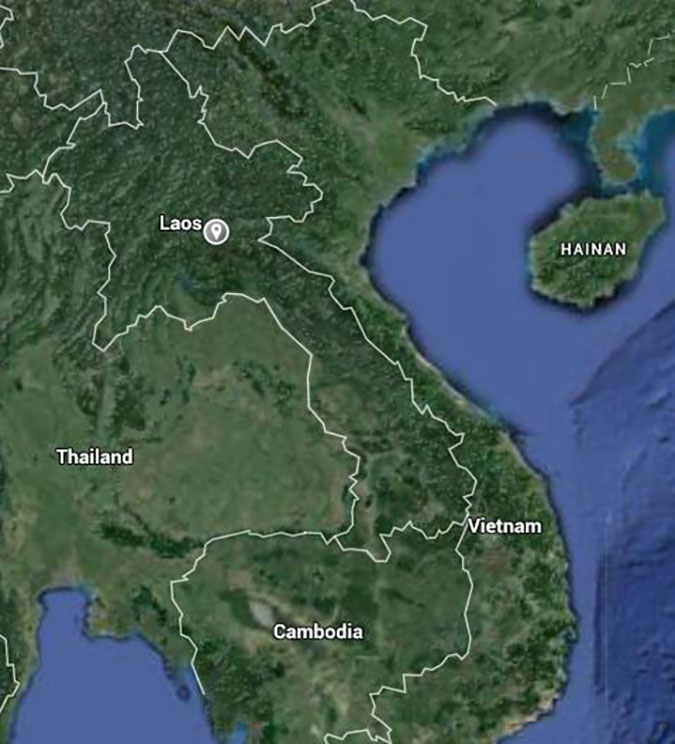Week of March 24
On March 23, 1961, U.S. Army Major Lawrence R. Bailey became the first American prisoner of war in Southeast Asia since World War II when he survived the downing of his C-47 aircraft and was captured by Laotian Communist insurgents known as the Pathet Lao. Bailey was held and interrogated in Laos for a year and half before he was finally released in August 1962.
Bailey was one of eight crewmen aboard the C-47 that day, assigned to conduct a radio intelligence mission over the ົ່ງໄຫຫິນ (Plain of Jars), in Laos. They took off from ວຽງຈັນ (Vientiane), the capital of Laos, and headed toward the insurgent-held area to the North. Pathet Lao antiaircraft gunners spotted their plane, however, and severely damaged at least one of the plane’s wings, sending it careening toward the ground. Major Bailey managed to escape the doomed aircraft and parachute to the ground. All seven of his fellow crewmen were killed in the crash—likely none of them were wearing their parachutes.
Bailey recalled that he landed approximately one-quarter of a mile from the crash, and sustained a broken arm, an injured leg, and a number of cuts and bruises. Pathet Lao soldiers, who had likely watched as Bailey came to the ground, quickly captured him. They took him to a field hospital, where they treated his injuries and began to interrogate him. The questioning continued nearly every day for two months, during which Bailey’s captors threatened to shoot him if he did not comply and occasionally withheld food and physically abused him. After Pathet Lao officers finished their interrogations, they took Bailey to solitary confinement in a house whose windows and doors were boarded up. He remained there, in near darkness, until his release 15 months later, in August 1962, after the U.S. appealed to the newly signed Geneva Agreement of 1962. He had spent 17 months total in captivity.
According to articles published at the time of his release, Bailey had dropped from 185 to 122 pounds by the time he returned to the United States. While Bailey was at Walter Reed Army Hospital for his recuperation, President John F. Kennedy visited his bedside and personally presented him with the Bronze Star Medal. In 1995, Bailey published his first hand account of his ordeal in his book, Solitary Survivor: The First American POW in Southeast Asia. He passed away in May 2015, several days shy of his 92nd birthday.1
1Stuart I. Rochester and Frederick Kiley, Honor Bound: The History of American Prisoners of War in Southeast Asia, 1961–1973 (Washington, D.C.: Historical Office of the Secretary of Defense, 2007), 29, 33–36, 281 (though there are prisoners in 1954, they were not “truly” POWs, according to p. 29, due to their short captivity and good treatment); “Bailey Gets Bronze Star,” in The Schenectady Gazette, August 28, 1962, p.1 (accessed via Google News, http://news.google.com/newspapers?nid=1917&dat=19620828&id=3WItAAAAIBAJ&sjid=FokFAAAAIBAJ&pg=4975,3903175 4/9/14); William J. Rust, So Much To Lose: John F. Kennedy and American Policy in Laos (Lexington, Ky: Univ. of Kentucky Press, 2014), 163–64; Lawrence R. Bailey, Solitary Survivor: The First American POW in Southeast Asia, (Washington D.C.: Brassey’s, Inc., 1995); Kevin Leonard, “Looking Back to when Laurel [MD] Welcomed Home First Southeast Asia POW,” Sept. 5, 2013, http://www.baltimoresun.com/news/maryland/howard/laurel/ph-ll-history-pow-0905-20130905-story.html (accessed 3/22/16); Obituary for Colonel Lawrence R. Bailey, Jr., Greensboro (NC) News and Record, May 20, 2015, http://www.greensboro.com/obituaries/bailey-jr-col-lawrence-r/article_fc0be94e-8c38-5b8b-ab6e-9faa396efa41.html (accessed 3/22/16).

|
Bailey and his crewmates were shot down over the Plain of Jars (named for a nearby ancient archeological site), an expansive plain amid the mountains and hills of northern Laos. The marker on this map shows the approximate location. (Google Satellite).